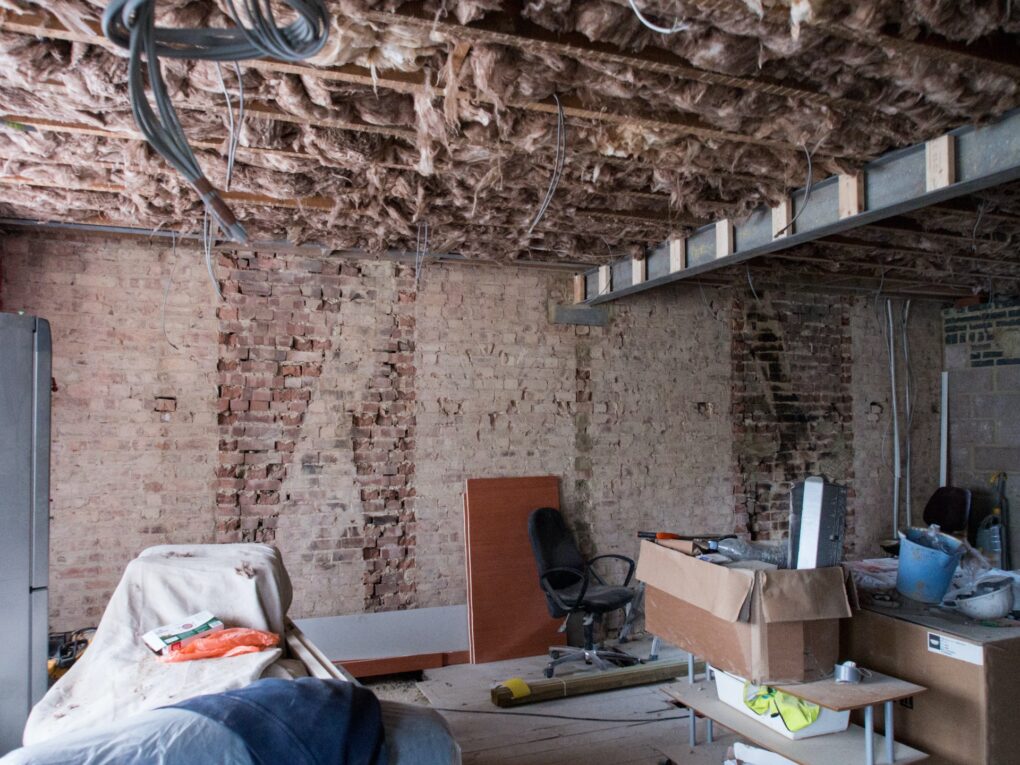Full Basement Renovation Project: Eco-Solutions for Sustainable Makeovers

A full basement renovation project is an opportunity to not only add functional living space to your home, but also to make a positive impact on the environment. Eco-friendly solutions can help reduce energy consumption, save resources, and minimize the carbon footprint of the renovation. This article will explore various eco-solutions that can be incorporated into your basement renovation project, including energy-efficient lighting, sustainable insulation, and repurposed materials, complete with real-life examples.
- Energy-efficient lighting
Using energy-efficient lighting is a simple and cost-effective way to reduce energy consumption in your basement renovation project. LED lights are an excellent choice due to their long lifespan, low energy usage, and high-quality light output.
Example: The Smith family, who recently undertook a full basement renovation project, chose to install LED lights throughout their new living space. By making this switch, they reduced their energy consumption by 75% compared to traditional incandescent bulbs, saving money on their energy bills and reducing their carbon footprint.
- Sustainable insulation
Insulating your basement properly is crucial to maintaining a comfortable temperature and reducing energy waste. There are several eco-friendly insulation materials to choose from, including cellulose, sheep’s wool, and recycled denim.
Example: During their basement renovation, the Johnson family decided to use sheep’s wool insulation. This natural, renewable material has a high R-value (thermal resistance) and is an excellent sound insulator. By choosing this eco-friendly option, the Johnsons improved the energy efficiency of their home while supporting a sustainable industry.
- Repurposed materials
Incorporating repurposed materials into your full basement renovation project is an excellent way to reduce waste and give new life to existing resources. Consider using reclaimed wood, recycled metal, or salvaged fixtures to create a unique and sustainable space.
Example: The Martinez family wanted to create an industrial-style basement, so they sourced reclaimed wood for their walls and ceiling, and used recycled metal for their light fixtures and shelving. This approach not only gave their space a distinctive look, but also reduced their renovation’s environmental impact.
- Energy-efficient windows and doors
Installing energy-efficient windows and doors is another effective way to reduce energy waste in your basement renovation. Look for products with a high energy rating or those that are certified by organizations like Energy Star.
Example: The Nguyen family decided to replace their old, drafty basement windows with high-performance, energy-efficient models during their renovation. This upgrade significantly reduced heat loss, improving the comfort of their new living space while reducing their energy bills.

- Low-VOC paints and finishes
Using low-VOC (volatile organic compound) paints and finishes can significantly improve indoor air quality, benefiting both the environment and the health of the occupants. These products release fewer harmful chemicals into the air, reducing the risk of respiratory issues and other health problems.
Example: For their full basement renovation project, the Green family chose low-VOC paint for their walls and ceilings. This decision not only improved the air quality in their new living space but also helped reduce their overall environmental impact.
- Solar and geothermal systems
If you’re looking for a more significant eco-solution, consider incorporating solar or geothermal systems into your basement renovation. These renewable energy sources can help power your home, reducing your reliance on fossil fuels and lowering your energy bills.
Example: The Patel family decided to install a solar panel system on their roof to help power their newly renovated basement. This investment allowed them to generate clean, renewable energy, significantly reducing their carbon footprint and saving money on their energy bills.
Conclusion
A full basement renovation project provides an opportunity to make your home more sustainable and environmentally friendly. By incorporating eco-solutions like energy-efficient lighting, sustainable insulation, and repurposed materials, you can create a space that not only looks great but also benefits the environment. Additionally, the use of energy-efficient windows and doors, low-VOC paints and finishes, and renewable energy systems like solar or geothermal can further enhance your renovation’s eco-friendliness.
As more homeowners become aware of the environmental impact of their choices, adopting eco-solutions in basement renovations and other home improvement projects is becoming increasingly popular. By making sustainable choices and investing in eco-friendly materials and technologies, you can ensure that your basement renovation contributes to a greener future for all.
Example: The Williams family wanted to create an eco-friendly entertainment space in their basement. They combined several eco-solutions, including LED lighting, recycled denim insulation, reclaimed wood for the walls and bar, energy-efficient windows, low-VOC paint, and a geothermal heating system. This combination of eco-friendly choices transformed their basement into an environmentally responsible, comfortable, and stylish space.
By incorporating these eco-solutions into your full basement renovation project, you can enjoy the benefits of a beautiful, functional space while also making a positive impact on the environment. Moreover, these sustainable choices can save you money on energy bills in the long run and contribute to a healthier living environment for you and your family. With a little planning and creativity, you can make your basement renovation a shining example of sustainable living.
